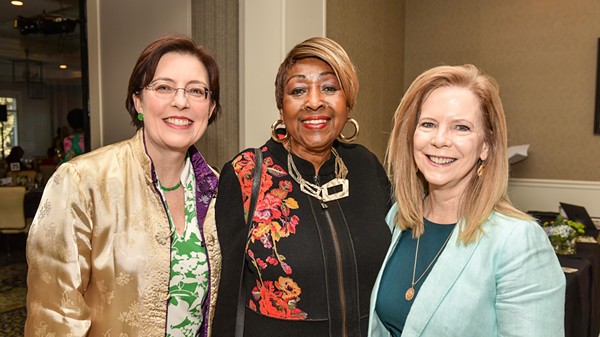A small but worthwhile exhibit has extended its run through the summer. "Art at War: Changing Attitudes" is a look at the shift in the way artists have portrayed warfare over the centuries.
Curated by the local Hurn Museum and featuring several works from their own collection, the show is actually hosted by the Beach Institute on Harris. The one-room exhibit at the Beach is in rough chronological order, beginning with a print of "Oath of the Horatii" by Jacques-Louis David, chronicler of and propagandist for the French Revolution.
The glorification of self-sacrifice -- in this case the three strapping sons of Horatious -- is a hallmark of early depictions of war, many of which were specifically intended to support war efforts of one kind or another.
All that begins to change with the groundbreaking work of Goya, whose searing depictions of loss and senseless brutality in the Spanish theatre of the Napoleonic Wars marked perhaps the first time an artist worked in a contemporary realistic/journalistic style to portray war's inhumanity.
Some Goya prints are featured, as well as a print of the iconic work "Guernica" by Picasso.
But the original works are of course the heart of the show. One of the artists showing original work at "Art at War" is Matt Sesow of Washington DC, who explained his process to us.
"The main thing I try to do is reflect the times I live in. I comment on current events and political realities I see all around me," he says. "Living in Washington especially gives a certain sense of urgency and allows me to make pictorial documents of things going on."
A particularly interesting annual project of Sesow's is "31 Days of July," with this year's edition underway as we speak.
"I've done ‘31 Days of July' since 2003," he says. "How it works is, I get up in the morning and take the top story from the newspaper or internet, and start painting about it. By the end of the month I will have 31 paintings sort of chronicling all the developments of that July."
Sesow's particular circumstances allow him a form of insight into the violent results of war.
"I was actually hit by an airplane at age 8," he says. "I was living in Nebraska at the time. An airplane literally landed on me. It's hard to explain."
That freak accident -- while certainly not the product of war or civil unrest -- nonetheless resulted in the amputation of much of his left arm.
"A lot of people these days, especially since 9/11 and Iraq, just assume I'm back from the service," he says. "I'm not, but I can relate to a soldier's struggle as far as having a near-death experience that results from a traumatic injury."
While Sesow stresses that soldiers too, not just civilians and prisoners, can often be victims of the dehumanization of modern war, he is strongly anti-war in sentiment.
"I'm against any kind of senseless occupation, or imperialism, or plutocracy sort of calling all the shots," he says. "The whole post-9/11 era really influenced me. I could see the smoke from the Pentagon from my window."
"Art at War" is a modest show, so I strongly recommend visiting the other displays on hand at the Beach Institute, including the expansive and mindblowing collection of woodwork by great Savannah artist Ulysses Davis.
Art at War
When: Through Aug. 30
Where: Beach Institute, Price and Harris





























